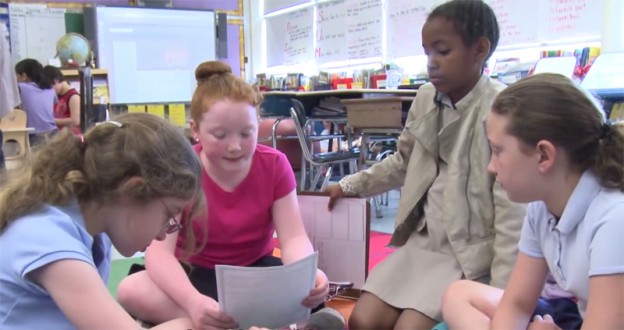
10 Examples Of Inclusion: For Those Who Need To See It To Believe It
What Does Inclusion Look Like?
One of the questions that I get asked the most being an advocate for inclusive education is, “What does it look like?”
Honestly, I think that is the hard part. Inclusion (with a BIG I) is going to look different depending on each school and student. That is why I think it is helpful to see it as a framework as opposed to a one-size-fits all system. But that does not solve the problem that you don’t really know what it looks like until you see it. In any case... here are 10 videos that I think are good examples on how particular schools put inclusion into practice. I know that once I saw these, it was impossible for me to go back to my old way of thinking. It is my hope that they will have the same effect on you.
1. SWIFT Domains and Features at Henderson School
“Schoolwide Integrated Framework for Transformation (SWIFT) is a national K-8 center providing academic and behavioral support to promote the learning and academic achievement of all students, including those with the most extensive needs.
SWIFT advances equity and excellence for ALL through the promotion of five core domain areas to support grade level academic and social learning:
Administrative Leadership, Family and Community Partnership, Inclusive Education Framework, Inclusive Policy Structure and Practice and Multi-Tiered Systems of Support
One of six nationally recognized SWIFT Knowledge Development Sites, the Dr. William W. Henderson Inclusion Elementary School in Dorchester, MA, is featured in this film and highlights some of the SWIFT domains and accompanying features.”
2. Education Revolution at Somersworth High School
“A closer look at the transformation of Somersworth High School, site of Who Cares About Kelsey?, through School Wide Positive Behavioral Interventions and Supports. The film highlights student leadership and data-driven decision making.”
3. Inclusion the Default at the Innovative School
At The IDEAL School, children of varying abilities all learn the same topics, but each student does so at their own level with an individual lesson plan tailored to their needs. Specialized services like speech and physical therapy are provided during elective periods so that no student misses out on academics or feels different.The school, which was started by a group of parents, is built around the idea that inclusion is merely a form of diversity. School leaders and parents say that the extremely inclusive model of education breeds an environment of total acceptance where each child values the strengths of their peers.”
4. Is Full Inclusion A Good Idea?
"Most importantly, we recognized that the path to full inclusion is a process; it doesn't happen all at once. For schools just getting started I'd recommend taking the following steps:
- Help all teachers acquire special education licensure.
- Read or watch a film about inclusion, and create lots of opportunities to discuss them.
- Reserve lots of time to talk about doubts, fears and questions as a staff.
- Be explicit with children and families about why inclusion is a community value.
- Create time/space for discussion about inclusion with students and families.
Who Decides the Limit on a Person's Learning?
"I understand where critics of full inclusion are coming from," Ayla concluded. "It's very easy for inclusion to go horribly wrong, resulting in an environment where the learning shuts down for everyone. One question I would ask, though, is who decides the limit on a person's learning? Full inclusion does not mean students are without supports. With the right supports, who knows what children will learn from one another? It doesn't seem right to me to eliminate peer models for learning and behavior. It also doesn't seem right for children to not have an opportunity to develop relationships and understanding or compassion for people who struggle in different ways. Inclusion done properly is responsive to student needs. There isn't one model for it."
5. Jordan’s Story: Hope Technology School
“We began with a parent’s vision of an inclusive community for families with and without disabilities. The hope was to use technology, particularly computers, to include individuals with special needs and their typically developing peers into one classroom environment.” See more here.6-10. 5 Videos That Will Change Your Mind About Inclusive Education
“I don’t know which side of the fence you are on in regard to inclusive education. And for all intents and purposes…it does not matter. This post could just as easily have been called, No…Really…I’m Not Crazy…Inclusive Education Works! Usually when I talk to people who are not familiar with the idea of having students with disabilities (including significant disabilities) in the general education setting they say they are having a hard time “wrapping their head around it” or want to see “what it actually looks like”. So…just for those of you who need to see it to believe it, I have picked out five videos that will most definitely change your mind about whether inclusive education is really a good thing or not (or at least they should)”
I think everyone has a story of how inclusion has gone wrong. It is harder to find really good examples of inclusive education. Do you have any to add to this list? Please share them with us in the comments section below!



